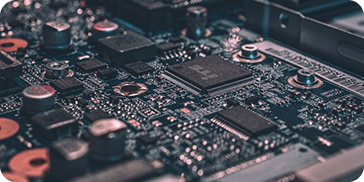Technology has become an inseparable part of our lives, continuously evolving to shape the way we work, communicate, and innovate. From the early days of computing to the rise of artificial intelligence, IT technology has revolutionized industries and societies worldwide. This article explores the key milestones in IT evolution and how they continue to transform the world around us.
The Dawn of Computing: Laying the Foundation
The journey of IT technology began with the invention of early computing machines in the 20th century. The first computers, such as the ENIAC in the 1940s, were massive, room-sized machines capable of performing basic calculations. These systems laid the groundwork for the digital revolution, enabling businesses and research institutions to process large amounts of data more efficiently.
With the development of transistors in the 1950s and integrated circuits in the 1960s, computers became smaller, faster, and more accessible. This era saw the birth of personal computing, with companies like IBM and Apple introducing devices that could be used in homes and offices. By the late 1980s, computers had transitioned from specialized research tools to essential business and personal devices, setting the stage for the information age.
The Internet Revolution: Connecting the World
The introduction of the internet in the late 20th century was a turning point in IT evolution. Initially developed for military and academic purposes, the internet quickly became a global phenomenon, transforming communication, commerce, and information sharing. The rise of the World Wide Web in the 1990s made online access mainstream, leading to the rapid growth of e-commerce, digital content, and social media.
As broadband and wireless technologies improved, internet access expanded to every corner of the world. The emergence of cloud computing further revolutionized how businesses operated, enabling remote collaboration, scalable storage, and cost-effective IT solutions. Today, the internet is not just a tool but an integral part of daily life, connecting people, businesses, and devices on an unprecedented scale.


| Industry | AI Application | Benefits |
|---|---|---|
| Healthcare | AI-based Diagnostics | Faster & accurate disease detection |
| Finance | Automated Trading Algorithms | Optimized investment decisions |
| Manufacturing | Robotics & Automation | Increased precision & reduced costs |
The Future of IT: Emerging Technologies and Innovations
The future of IT technology promises even greater transformation, driven by emerging innovations such as blockchain, quantum computing, and the Internet of Things (IoT). Blockchain technology is enhancing data security and transparency, especially in finance and supply chain management. Meanwhile, quantum computing, still in its early stages, has the potential to solve complex problems far beyond the capabilities of classical computers.
IoT is also revolutionizing how devices interact, creating smart homes, cities, and industries. With billions of connected devices generating real-time data, businesses can optimize operations, reduce energy consumption, and enhance overall efficiency. As technology continues to evolve, the focus will be on making IT more sustainable, ethical, and inclusive, ensuring that digital advancements benefit society as a whole.
The key to success in any business is understanding your customer. Providing a great customer experience is a crucial part of that understanding
— Jeff Bezos, Founder of Amazon
Conclusion
The evolution of IT technology has reshaped the world in unimaginable ways, from early computing breakthroughs to AI-driven automation. As we step into the future, technology will continue to be a driving force of innovation, opening new doors for businesses, industries, and individuals. By embracing these advancements responsibly, we can create a more connected, efficient, and intelligent world.





